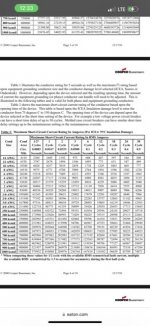avargasm
Member
- Location
- San José, Costa Rica
- Occupation
- Design Electrical Engineer
"but there must be reasons for your concerns"I wouldn’t call then earth wires, that seems to imply that they are to send faults to earth and that’s not the case. Both equipment grounds and neutrals should allow ground fault current and short circuit current to go to the same point: at the service. The only type of fault contact to earth will open is a Class A ground fault protection circuit. Even then the preferred fault path is to the service. I’m not sure of your electrical system, but there must be reasons for your concerns.
Short circuits and high load faults and arcs between conductors inside raceways are COMMON issues in electrical installations in the USA and the world. It's natural and responsible to be concerned about these kinds of faults and plan to avoid them.


